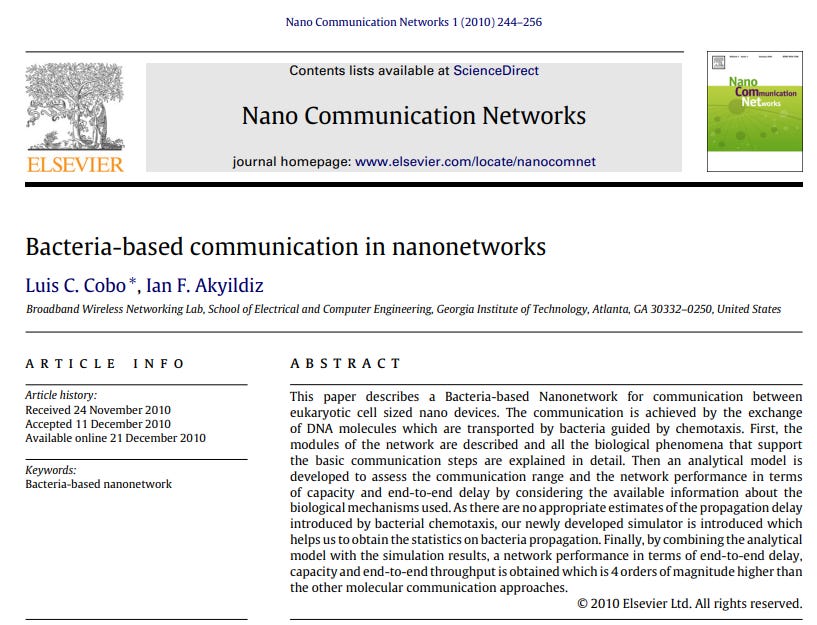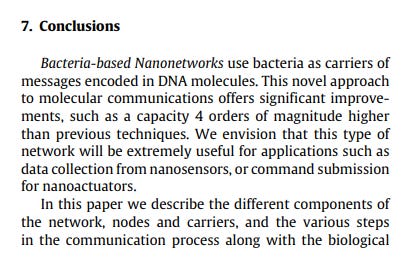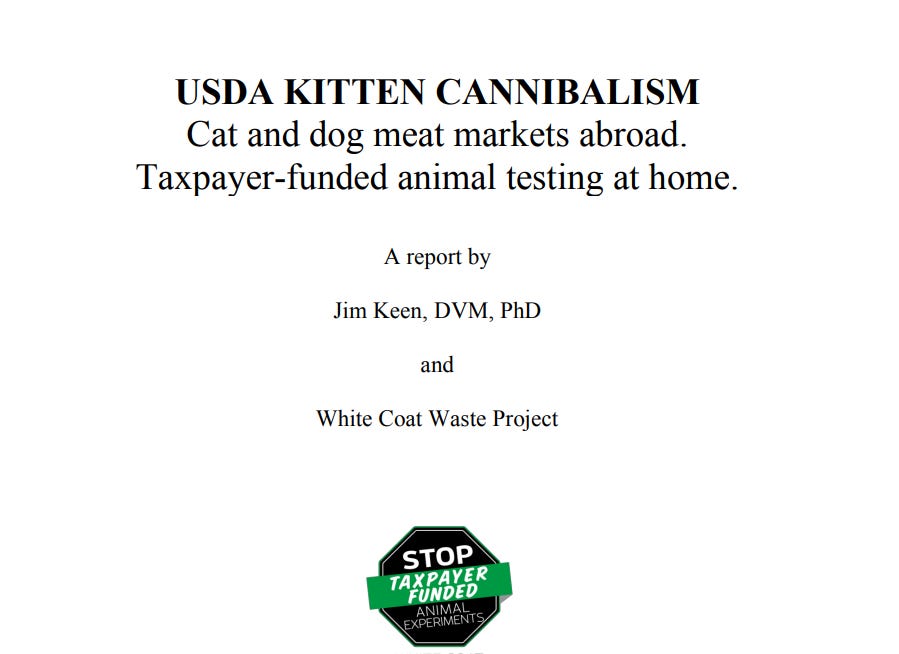DNA IN PFIZER'S VIALS?
Bacteria-based nanonetworks
As you may have heard, University of South Carolina Professor Dr. Phillip Buckhaults testified before the South Carolina Senate Medical Affairs Ad-Hoc Committee of Department of Health and Environmental Control. Dr. Phillip Buckhaults detected foreign pieces of DNA in Pfizer's vials, that shouldn’t be there. They could integrate into the genome, causing multiple problems - “from now on forever more, amen”.
https://www.youtube.com/watch?v=IEWHhrHiiTY SC Senate Hearing - USC Professor Dr. Phillip Buckhaults - YouTube
SC Senate Hearing - USC Professor Dr. Phillip Buckhaults - YouTube
From the transcript:
For those of you don't know me my name is Phillip Buckhaults. I have a PhD in Biochemistry and molecular biology. I'm a cancer Gene jock, basically I do cancer genomics research at the University of South Carolina and what that means is that I'm kind of an expert on all the ways that the human genome can get fussed with during your lifetime and which of those things cause cancer and which one don't okay, so technically that means that I'm very very skilled in in the art of DNA sequencing, okay, I can figure out the sequence of things that I didn't know what I was looking for and I'm also pretty good, when I say I mean the people in my laboratory that you're not going to hear their names but there's a group of people that do this excellent work, we're really good at detecting foreign pieces of DNA in places where they're not supposed to be even if they're real low levels.
3:51 Pfizer vaccine that were given out here in Colombia uh one of my colleagues was in charge of that vaccination program in the College of Pharmacy and for reasons that I still don't understand he kept every single vial, so he had a whole freezer full of the empty vials well the empty vials have a little tiny bit in the bottom of them he gave them all to me.
And I looked at them we had two batches that were given out here in Colombia and I checked these two batches and I checked them by sequencing and I sequenced all the DNA that was in the vaccine and I can see what's in there and it's surprising that there's any DNA in there and you can kind of work out what it is and how it got there and I'm kind of alarmed about the possible consequences of this both in terms of human health and biology (!!!!!!!!!!!!!!!!!!!!!!!!!!!!!!!!!!!!!!)
But you should be alarmed about the regulatory process that allowed it to get there. So this DNA, in my view, it could be causing some of the rare but serious side effects like death from Cardiac Arrest (!!!!!!!!!!!!!!!!!!!!!!!!!!!!!!!!!!!!!!)
There's a lot of cases now um of people having suspicious death after vaccine it's hard to prove what caused it. It's just, you know, temporally associated, and this DNA is a plausible mechanism okay.
This DNA can and likely will integrate into the genomic DNA of cells that got transfected with the vaccine mix (!!!!!!!!!!!!!!!!!!!!!!!!!!!!!!!!!!!!!!)
This is just the way it works. We do this in the lab all the time we take pieces of DNA we mix them up with a lipid complex like the Pfizer vaccine is in we pour it onto cells and a lot of it gets into the cells and a lot of it gets into the DNA of those cells and it becomes a permanent fixture of the cell (!!!!!!!!!!!!!!!!!!!!!!!!!!!!!!!!!!!!!!)
It's not just a temporary thing (!!!!!!!!!!!!!!!!!!!!!!!!!!!!!!!!!!!!!!)
It is in that cell and all of its progeny from now on forever more amen (!!!!!!!!!!!!!!!!!!!!!!!!!!!!!!!!!!!!!!)
So, that's why I'm kind of alarmed about this DNA being in the vaccine. It's different from RNA because it can be permanent this is a real Hazard for genome modification of Long Live sematic cells like stem cells and it could cause, theoretically this is all a theoretical concern, but it's pretty reasonable based on solid molecular biology that it could cause a sustained autoimmune attack toward that tissue. It's also a very real theoretical risk of future cancer in some people depending on where in the genome this foreign piece of DNA lands.
It can interrupt a tumor suppressor or activate an endogen. I think it'll be rare, but I think the risk is not zero and it may be high enough that we are to figure out if this is happening or not. And then again, the autoimmunity thing is not my wheelhouse; I'm not an immunologist but the cancer risk is that's my bag I know this is a thing and it is a possibility (!!!!!!!!!!!!!!!!!!!!!!!!!!!!!!!!!!!!!!)
Okay? A little nerdy science here, the central dogma of molecular biology is that DNA gets transcribed into RNA, okay, and then RNA gets translated into protein this is just how life runs (!!!!!!!!!!!!!!!!!!!!!!!!!!!!!!!!!!!!!!)
Why does this matter? Well, DNA, for the purposes of this discussion, DNA is a long-lived information storage device, okay, what you were born with you're going to die with and pass on to your kids (!!!!!!!!!!!!!!!!!!!!!!!!!!!!!!!!!!!!!!)
DNA lasts for hundreds of thousands of years, and it can last for generations (!!!!!!!!!!!!!!!!!!!!!!!!!!!!!!!!!!!!!!)
If you and get pass it on to your kids, right, so alterations to the DNA they stick around.
RNA by its nature is temporary it doesn't last and that feature of RNA was part of the sales pitch for the vaccine the pseudo iDine was supposed to make the RNA last a little bit longer but still it's a transient phenomenon we're talking hours to days okay and then proteins once proteins are made, they also don't last forever. They last for hours to days.
But something that makes its way into DNA has the potential to last for a very long time maybe a lifetime (!!!!!!!!!!!!!!!!!!!!!!!!!!!!!!!!!!!!!!)
So, this is a picture of the sequencing read that the sequencing run that I did, uh, in the lab, um, from a couple of batches of the Pfizer vaccine and all those little bitty lines here are the little, tiny pieces of DNA that are in the vaccine they don't belong there (!!!!!!!!!!!!!!!!!!!!!!!!!!!!!!!!!!!!!!)
They are not part of the sales pitch or the marketing campaign and they're there there's a lot of them…
IS THAT CONTAMINATION?
NO!
IT COMES FROM BACTERIA AND IT IS DELIBERATE!!!
https://www.ianakyildiz.com/bwn/papers/2010/j2.pdf Bacteria-based communication in nanonetworks (ianakyildiz.com)
https://ianakyildiz.com/wp-content/uploads/2021/09/panacea.pdf PANACEA: An Internet of Bio-NanoThings Application for Early Detection and Mitigation of Infectious Diseases (ianakyildiz.com)
From micro-electro-mechanical systems’ perspective, to develop the proposed bio-nanosensor architecture, there are many challenges to be tackled: (i) Bacterial sensor growth: Ideally, we would like to have a constant number of live bacterial sensors that only as act chemical transducers.
Live bacteria however replicate. Hence, keeping the bacterial sensor population steady within the reservoir is a major challenge.
(ii) Bacterial noise: Live bacteria interact with the environment and adapt. Therefore, the effect of stochastic behavior of bacteria on the sensor performance should be analyzed.
There are approaches to address these challenges, namely, physical and chemical means for population control.
Physical approaches include use of confinement of bacteria mechanically [9], thermally [10] or optically [11].
Mechanical confinement makes use of membranes to force a monolayer of bacteria. Thermal control is based on joule heating through integrated heaters on the perimeter of the colony.
Likewise, structured UV illumination is used to inactivate bacteria in the perimeter regions. (!!!!!!!!!!!!!!!!!!!!!!!!!!!!!!!)
[UV STREETLIGHTS ????????????????????]
For chemical control, bacteriostatic antibiotics such as tetracycline as well as selectively patterned antibacterial coatings such as silver nanoparticles [59] are other alternatives to balance the death and reproduction rate within the bacterial colony.
IS THAT WHY IVERMECTIN IS ALSO EFFECTIVE IN TREATING ADVERSE EFFECTS OF THESE INJECTIONS?????
https://ncbi.nlm.nih.gov/pmc/articles/PMC4116007/ In Vitro Effects of Ivermectin and Sulphadiazine on Toxoplasma gondii
https://www.ncbi.nlm.nih.gov/pmc/articles/PMC5819080/pdf/13756_2018_Article_314.pdf In vitro activity of ivermectin against Staphylococcus aureus clinical isolates (nih.gov)
https://www.nature.com/articles/ja201711 Ivermectin: enigmatic multifaceted ‘wonder’ drug continues to surprise and exceed expectations | The Journal of Antibiotics (nature.com)
https://www.livescience.com/surprising-toxoplasma-gondii-facts
One of the parasite's most frightening — and most controversial— possible effects is its impact on the mind. In rats and other animals, it can cause behavioral changes (see more below) and it has been linked to several different neurological disorders in humans too.
Two of the most noteworthy conditions to be linked to T. gondii are schizophrenia and bipolar disorder.
In 2006, a study published in the journal Biological Psychiatry first suggested that babies that contract T. gondii in the womb had higher rates of schizophrenia later in life than those who were not exposed prenatally. In 2014, a study published in The Journal of Nervous and Mental Disease showed that people with schizophrenia and bipolar disorder were more likely to have T. gondii antibodies in their system, which are left behind from a previous infection.
T. gondii has also been linked to changes in human behaviour, some of which could be deadly. In 2015, a study published in the Journal of Psychiatric Research suggested that T. gondii infections could make people more aggressive and impulsive, potentially even increasing the likelihood suicide.
https://pubmed.ncbi.nlm.nih.gov/29151352/ Plasmid DNA Delivery: Nanotopography Matters - PubMed (nih.gov)
BUT WHERE DID THESE BACTERIA COME FROM???
https://medalerts.org/vaersdb/findfield.php?TABLE=ON&GROUP1=SYM&EVENTS=ON&VAX=COVID19
Toxoplasmosis 102 0.01%
https://www.ncbi.nlm.nih.gov/pmc/articles/PMC8163588/ The Symptoms and Clinical Manifestations Observed in COVID-19 Patients/Long COVID-19 Symptoms that Parallel Toxoplasma gondii Infections - PMC (nih.gov)
DID THEY COME FROM HERE?
https://blog.whitecoatwaste.org/wp-content/uploads/2019/03/USDA-Kitten-Cannibalism-March-2019.pdf
According to ARS, the project currently receives $650,000 a year in taxpayer funds. The agency has spent $22.5 million and killed more than 3,000 cats for this project since it began in 1982. In 2018—the 36th year of the project—an investigation by White Coat Waste Project first brought this experiment to the public’s attention using documents obtained through the Freedom of Information Act (FOIA).2 Subsequently, concerns were raised by Congress members,3 veterinarians,4 and others regarding the necessity of cat use, as well as USDA’s long-standing policy of killing healthy kittens after the parasite eggs are collected.
Dog and cat meat represents an abnormal diet for cats, dogs and mice so it is likely irrelevant to natural toxoplasmosis biology. Their scientific relevance and justification is questionable, at best, as is their relevance to American public health since we do not consume cats and dogs, and the practice is now outlawed in the U.S.39 Other irrelevant toxoplasmosis experiments outside of USDA’s mission The same ARS experimenter has also conducted dozens of studies abroad and many non-livestock toxoplasmosis studies that killed lab cats and have little or no relevance to toxoplasma biology or epidemiology affecting American livestock or U.S. citizens. International and U.S.-native species studies included black bears, dolphins, sea otters, Hawaiian crows, toucans, walruses, bobcats, water buffalo, Canada geese, raccoons, coyotes, skunks, arctic foxes, feral guinea fowl, woodrats, and alpacas.
The evidence is overwhelming that ARS’s refusal to rehome kittens and cats from completed toxoplasmosis experiments is neither science- nor evidence-based.
https://www.sciencedirect.com/science/article/abs/pii/S187877891830139X The anatomy of bacteria-inspired nanonetworks: Molecular nanomachines in message dissemination - ScienceDirect
Given the fact that bacteria are able to survive in a wide variety of environments, they have developed sophisticated ways of translocating/migrating [34], exchanging information, and communicating at multiple levels (cell-cell interactions, host-microbe interactions, inter-species interactions, inter-kingdom interactions, quorum sensing) [35], [36]. Concurrently, genetic material exchange can occur in three main ways: (a) transformation, (b) transduction, and (c) conjugation. If a bacterium faces a constant concentration of chemoattractant, its receptors will show a form of saturation and the bacterium will not show similar dynamics as time goes on. This can also affect motility and implicitly the performance of nanonetworks [37].
Transformation is a process, where exogenous DNA is inserted in the bacterial cellular milieu. In the case of transduction, foreign DNA is introduced into the bacterial chromosome through viral infection (bacteriophage), while in conjugation, DNA is transferred though direct cell–cell contact [38]. A very interesting characteristic is the fact that bacteria may also contain plasmids. Plasmids are small circular double-stranded DNA molecules of widely variable length that contain essential genetic information (mainly related to adaptation mechanisms) [39]. Plasmids are widely used in information exchange, genetic engineering, genetic transformation, etc., due to the fact that they replicate independently in multiple copies and can transfer host bacterial DNA between bacteria [40].
…





















Believe it or not but this guy is two steps ahead of you and has all the studies that prove GM Recumbent Bacteria, Yeast,.......
is being used for Genetic Modification and Micro Biome Digitisation.
Also why Sauerkraut and Natto is most helpful.
Listen to his series, The Digital Micro Biome.
https://rumble.com/user/Fermenti
Fermenti has less than 200 subscribers on Rumble and said reading the comments and replying to comments is what he likes the most about his channel.
You know the saying, two heads are better than one.
He is a kind hearted man, that loves natures natural creations.
Namaste.